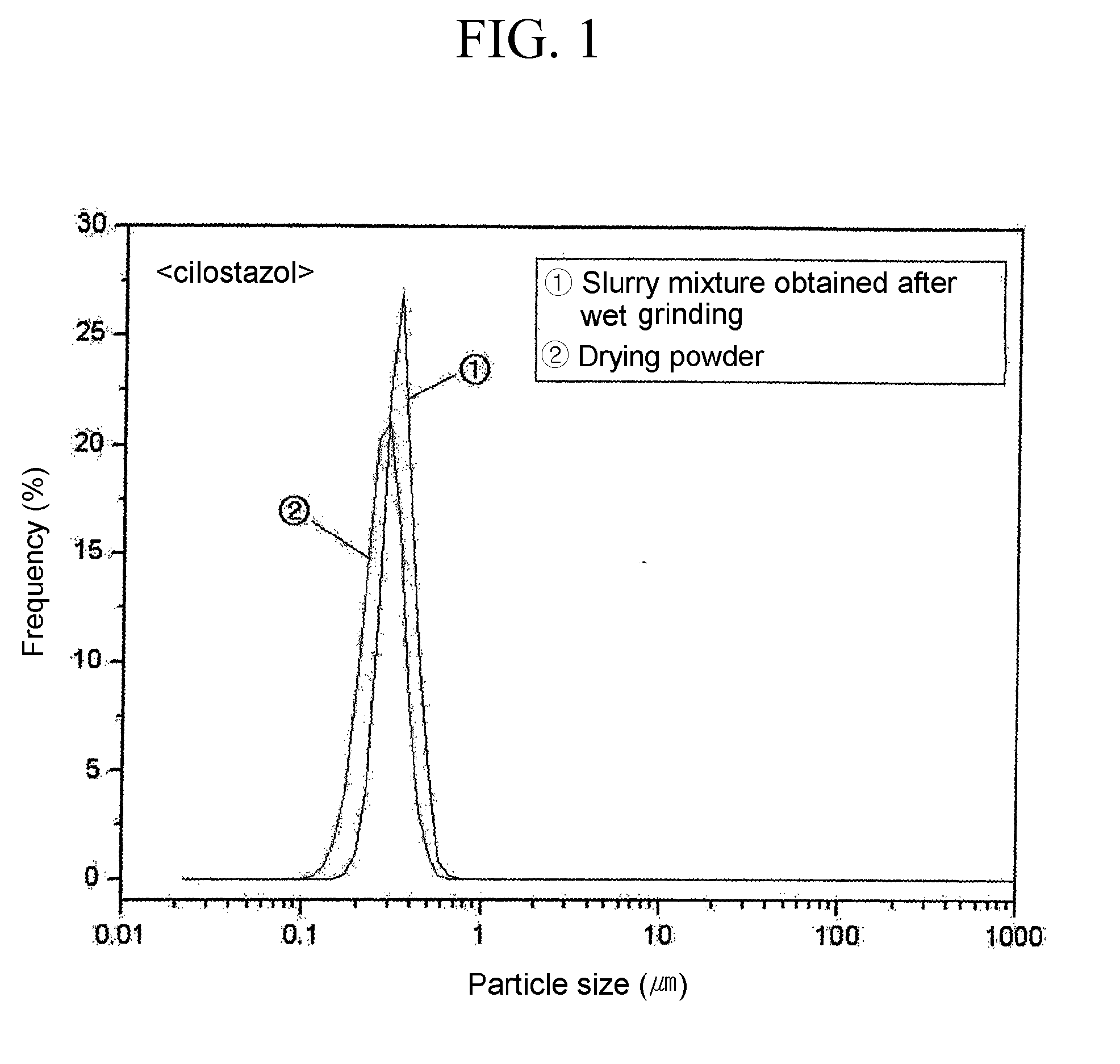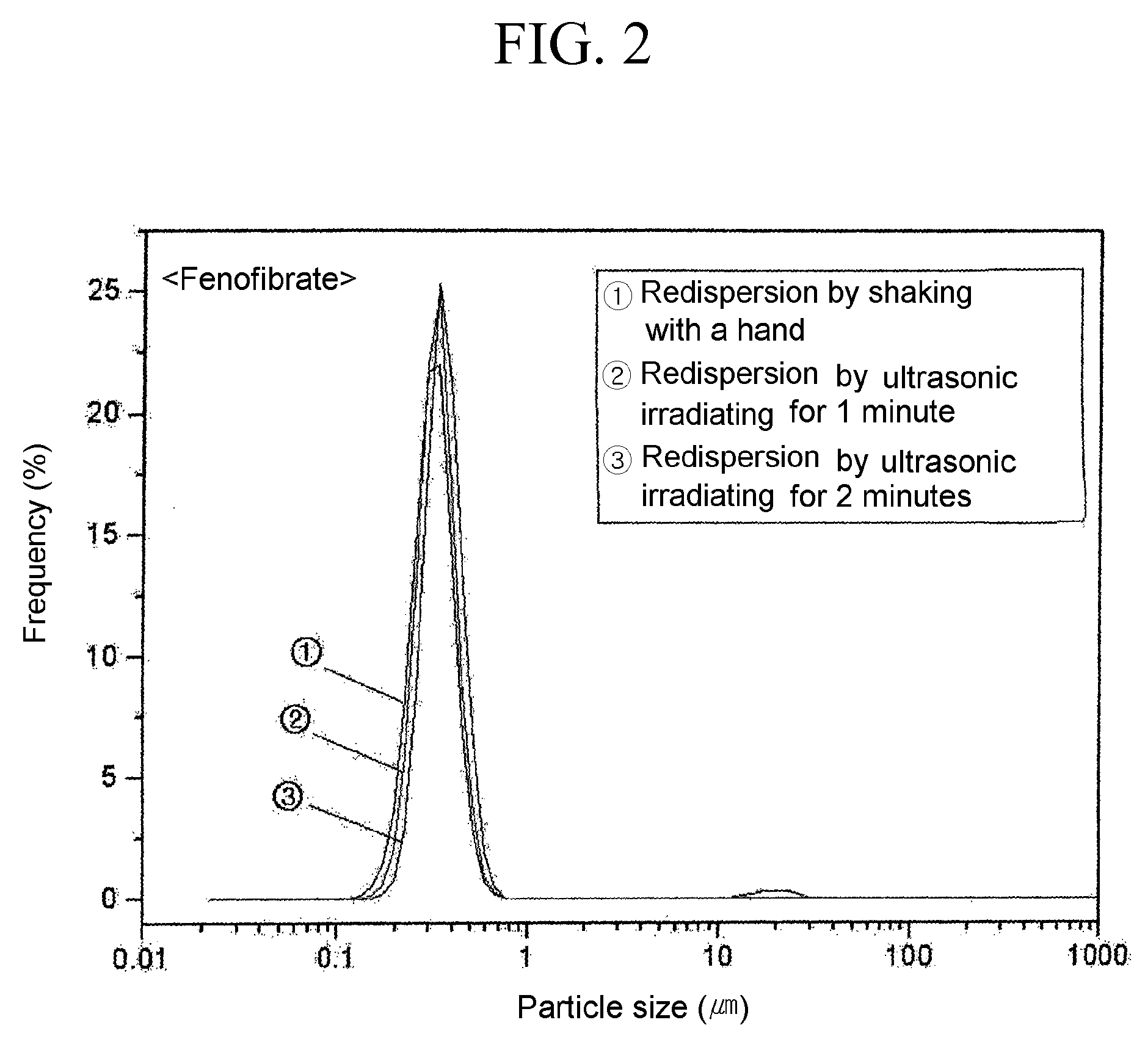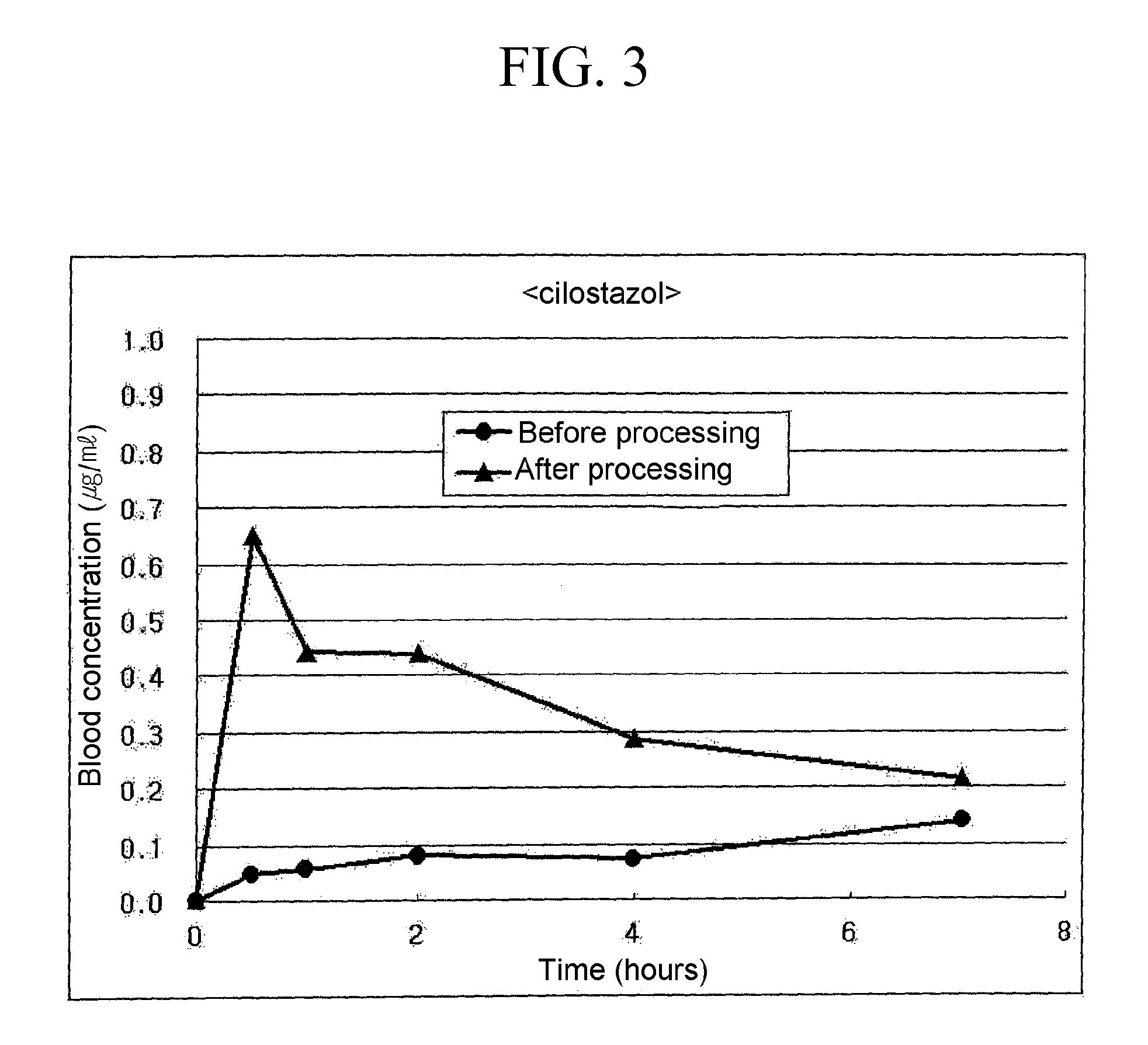Process For Preparing Powder Comprising Nanoparticles of Sparingly Soluble Drug
a technology of sparingly watersoluble drugs and powder compositions, which is applied in the direction of drug compositions, applications, dispersed delivery, etc., can solve the problems of unfavorable drug development, unfavorable drug development, and poor bioavailability, and achieve the effect of improving bioavailability and particle size stability of the drug
- Summary
- Abstract
- Description
- Claims
- Application Information
AI Technical Summary
Benefits of technology
Problems solved by technology
Method used
Image
Examples
example 1
Particle Size Variation of the Active Ingredient with the Kind of the Dispersion Agent Used
[0046]In order to observe the particle size variation of the active ingredient with the kind of the dispersion agent used, a number of powders were prepared using naproxen as the active ingredient and using various dispersion agents:
[0047]0.15 g of naproxen (TCI Chem) having an average particle size of 3 to 10 μm, 0.15 g of lactose and 0.03 g of hydroxypropy cellulose (HPC) were added to 3.4 ml of a saturated aqueous solution of lactose, and the mixture was wet ground using an oscillating mill at the room temperature for 30 minutes. The slurry mixture thus obtained was centrifuged at 4° C., 15,000 rpm for 30 minutes, and the residue in the bottom layer was vacuum dried for 24 hours to obtain a powder.
[0048]In the above process, the averaged particle size of naproxen particles was measured for 1) a test solution obtained by redispering 0.02 ml of the slurry mixture obtained after wet grinding i...
example 2
Particle Size Variation of the Active Ingredient with the Molecular Weight of the Surface Stabilizer
[0052]In order to examine how the particle size variation of the active ingredient is affected to the molecular weight of the surface stabilizer, powders were prepared by repeating the procedure of Example 1 except for using polyvinylpyrrolidones having molecular weights of 10,000, 29,000, 55,000 and 130,000, respectively, instead of hydroxypropyl cellulose as the surface stabilizer.
[0053]The average particle sizes of the active ingredient were measured by the same method as in Example 1, and the results are shown in Table 2.
TABLE 2AverageActiveDispersionSurfaceParticle SizeparticleIngredientagentstabilizer(D10~D90) (nm)size (nm)NaproxenLactosePVP 10,000868.3~507.116,800PVP 29,000 95.9~208.7156.9PVP 55,000120.8~250.3192.4PVP 130,000150.6~417.5275.8
[0054]As shown in Table 2, when inventive powders were redispersed in distilled water, the particle size of the active ingredient remained ...
example 3
Particle Size Variation of the Active Ingredient with the Amount of the Dispersion Agent
[0055]In order to examine how the particle size variation of the active ingredient is affected to the amount of the dispersion agent, powders were prepared by repeating the procedure of Example 1 except for using lactoses in amounts of 180, 140, 100, 60 and 20% by weight based on the weight of naproxen.
[0056]The average particle sizes of the active ingredient were measured by the same method as in Example 1, and the results are shown in Table 3.
TABLE 3Amount of lactoseParticle(% by weight basedSizeAverageActiveSurfaceon the weight of the(D10~D90)particleingredientstabilizeractive ingredient)(nm)size (nm)NaproxenHPC200% by weight *——180% by weight108~310208140% by weight109~316391100% by weight 40~260164 60% by weight339~629500 20% by weight 154~4,2923,025* Nanoparticles are not formed due to the significant increase of the viscosity.
[0057]As shown in Table 3, As the amount of lactose is smaller,...
PUM
| Property | Measurement | Unit |
|---|---|---|
| Temperature | aaaaa | aaaaa |
| Fraction | aaaaa | aaaaa |
| Percent by mass | aaaaa | aaaaa |
Abstract
Description
Claims
Application Information
 Login to View More
Login to View More - R&D
- Intellectual Property
- Life Sciences
- Materials
- Tech Scout
- Unparalleled Data Quality
- Higher Quality Content
- 60% Fewer Hallucinations
Browse by: Latest US Patents, China's latest patents, Technical Efficacy Thesaurus, Application Domain, Technology Topic, Popular Technical Reports.
© 2025 PatSnap. All rights reserved.Legal|Privacy policy|Modern Slavery Act Transparency Statement|Sitemap|About US| Contact US: help@patsnap.com



